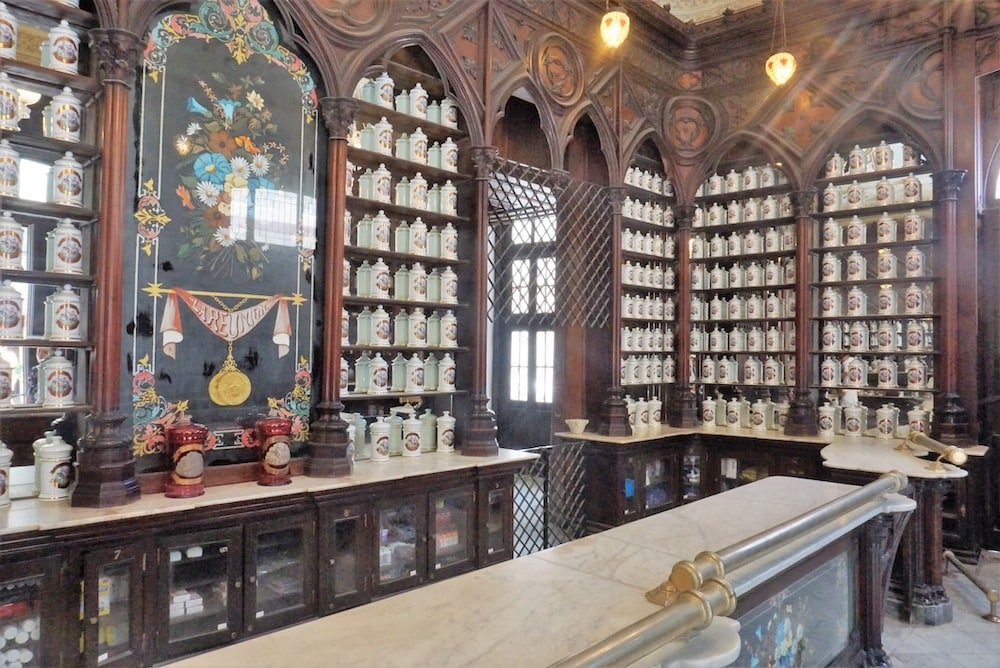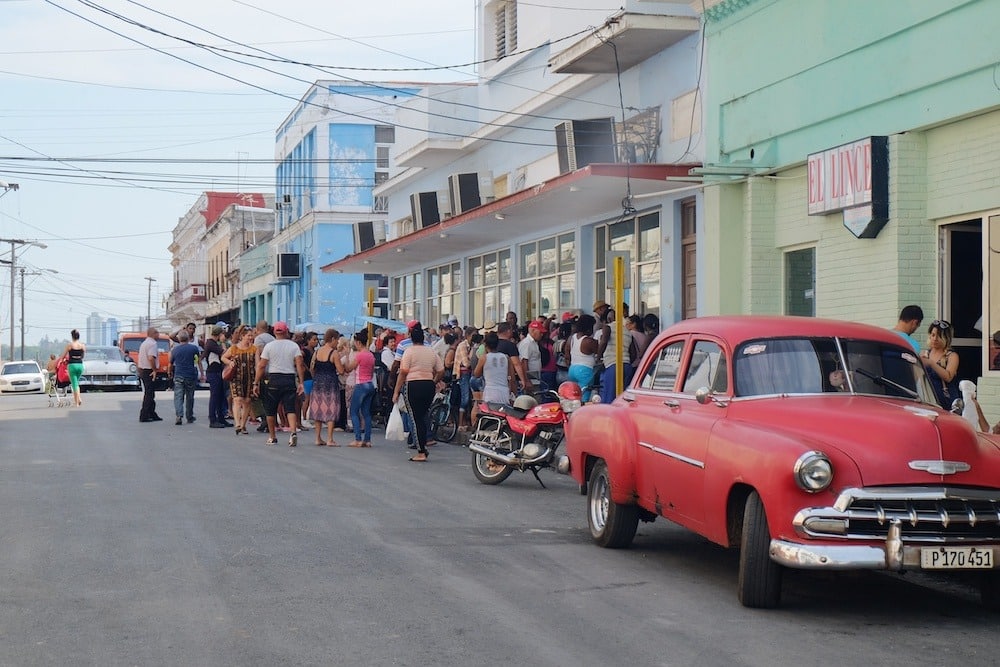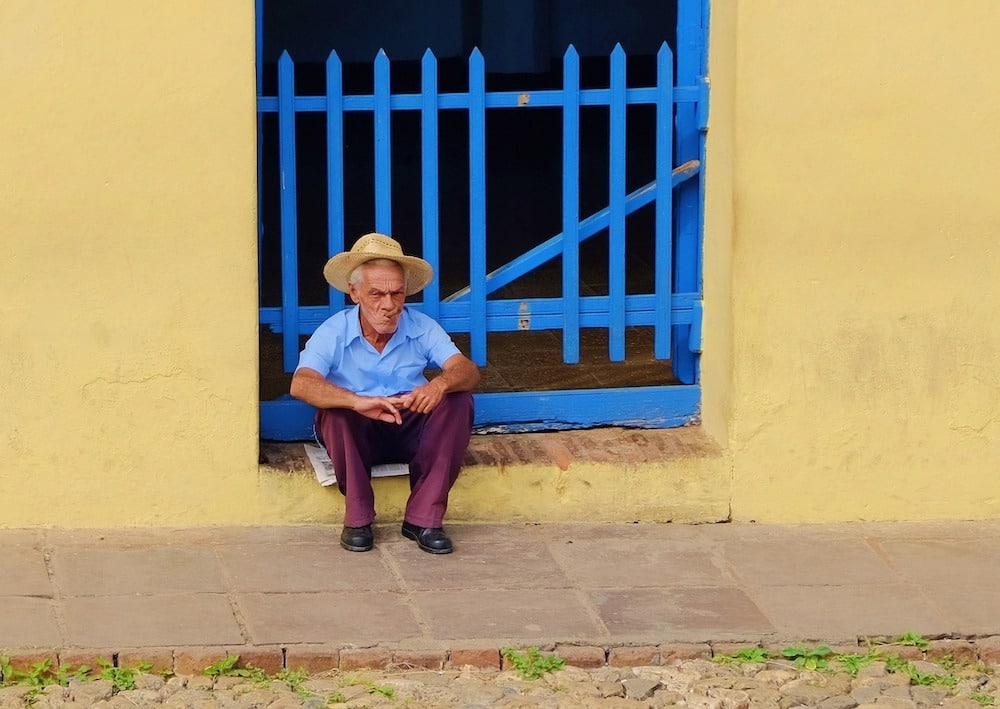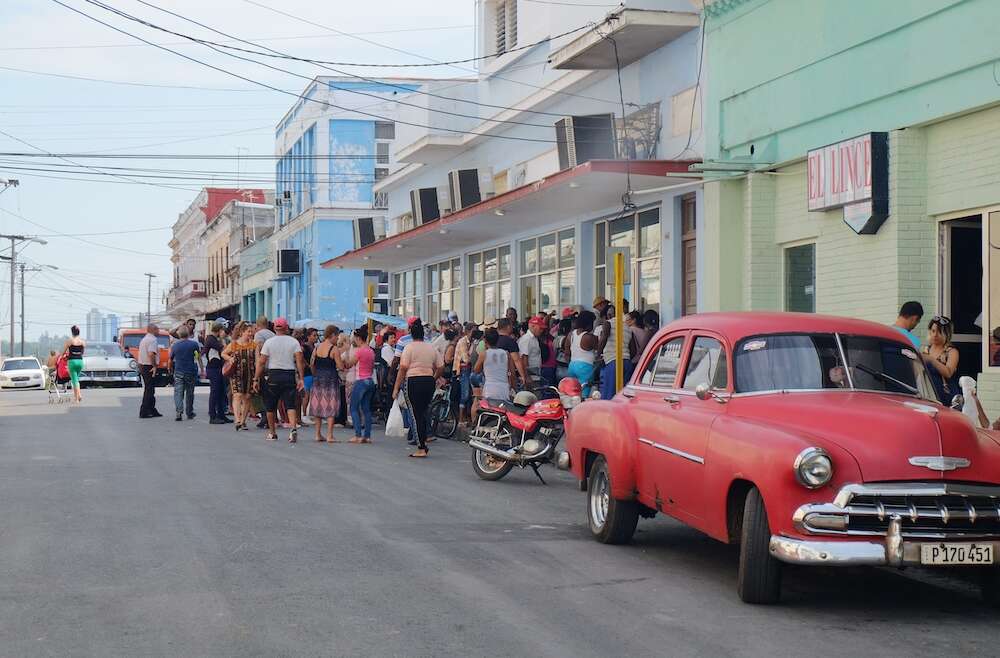The medicine in Cuba is a so fraught theme of contrasts, as the whole Island is true. It is said a lot about the professionalism of the doctors, the inventions in the biotechnological field and the hospitals without lineouts. Even medical tourism is flourishing on the Island. How can we see this in the practice?
Contents

When reading about Cuba on the official website of the World Health Organization, sometimes we can get the impression that we moved out for a moment to one of the Scandinavian countries.
One of the lowermost infant mortality rates, the high life expectation (77 years for men, 81 years for women), the first country of the world in eliminating the problem of the transmission of HIV from a pregnant woman to her baby, a country that accomplishes advanced investigations of vaccines, doctors respected all over the world, etc., etc. Oh and Abs in abundance. Wait a moment … let’s go back to Earth.
How does it really be? Do they all have immediate access to a specialist? Is medical attention completely free for all the residents? Do they never lack medicine? In what condition are the hospitals?
Medical assistance is fast and free for all
In the first place, we should begin with the fact that the service of health in Cuba is available for all citizens. From the beginning of the Cuban revolution, medical attention has been the foremost child of Fidel Castro. The Argentinian doctor and revolutionary Che Guevara also made his contribution here.
It doesn’t matter if a Cuban works or not, he will always have the same rights as the other ones. When talking to Cubans many times about the percentage of the salary perceived by people who work in the health system, you can hear the information that, of course, they do not pay anything, everything is covered by the government. However, it is hard to believe, since salaries are at the level of enclosure of $20 per month. After all, it is logical that the state takes what’s his and next creating the idea of a utopian system and free medical attention. Nevertheless, we know that there are no free lunches…
When they are asked on the street, the Cubans will still say that medicine is one of the greatest successes of the revolution of ’59. Let’s see, notwithstanding, these two faces of the coin. It is outrageously difficult to evaluate in an unequivocal way, like all Cuba.
Medical attention for tourists in Cuba
The tourists who visit Cuba, just like they fail to see a lot of points of view of Cuban life, neither they will see the «true» Cuban service of health. For foreigners, there is the so-called International Clinics that often look like hospitals in Europe.
One of the best clinics is Cira García in Havana, where you can take a seat in a comfortable armchair in the waiting room, looking at the fishes at the aquarium and the whole staff nurses the patients with one smile on their faces. The visit is paid in USD currency, and when we came back, the insurer will refund the cost of the treatment (the possession of the travel insurance in Cuba is mandatory).
In smaller cities, where there are Poly-clinics, the doctors for tourists have an office schedule and service separately. Also, you pay for the consult in CUC, and only then do you get payback by the insurer.
If necessary, the tourists buy at international pharmacies, where prices are to the level of the European high costs. In those pharmacies, you can buy, for instance, a pack of foreign plugs, for what we will pay the equivalent of $8 (!).
An interesting fact is that sometimes the tourists during their stay in Cuba want to stock up medicaments that are not known in Poland. An example is the famous poison of the blue scorpion, which is considered a homoeopathic medication in Cuba, and it is often advertised overseas to help to treat cancer. Many people also try to sell these things through commerce on Internet, which is why you should not be deceived in case that someone requests you to bring such a thing to a supposedly sick aunt.
A lesser-known characteristic of the system of the health of Cuba is the existence of Specials Clinics destined for tourists, politicians and VIPs. The State reserves the best hospitals and doctors for the national elite and foreigners, while the common Cubans sometimes have to go to the black market or to ask their friends or foreign relatives to send medicaments.

Positive benefits of the service of health in Cuba
The system of the health of Cuba is one of the most proactive in the world. The Cuban population of 11, 27 Million has 452 clinics, and Government prioritizes the prevention of diseases, universal insurance and access to treatments. In 1959, there were only 6.000 doctors all over the country and half of them emigrated after the Cuban revolution. Towards 2014, Cuba had 67.2 doctors for every 10,000 inhabitants, and only Qatar and Monaco were ahead. In 2019, according to Cuban records, this number still increased. In 2015, Cuba spent 10, 57 % of its GDP on health, which is a little more than the world average of 10 %.
The fact that doctors are not absent and have time for the patients is a feeling not only for the Cubans but also for the tourists. – When I was pregnant, during a routine visit, I had too high blood pressure, the doctor did not free me from the office until he had managed to hit it with natural green apple syrups – says Ewelina, who passed an important part of her pregnancy in Cuba, under the assistance and supervision of Cuban doctors. – I remember a similar situation in Poland when during a visit of 10 minutes the doctor informed me hurriedly that he had to scan the blood pressure only. Thanks. Good-bye

More patients were waiting in the corridor – Ewelina says. – Then, I missed the service of Cuban health, with calm, patience and time. I don’t even care to know that I left 10$ as a tip to this very useful doctor for his valuable help. In Cuba let’s call it ‟tips” which is something completely normal and accepted by society. Something called backhander in our country has a new meaning and helps, she adds.
When a threat of diseases carried by mosquitoes exists (for example, the virus of Zika or the virus of break-bone fever), the patrols circulate for the cities knocking on the doors of each resident and informing for sprinkling the rooms and asking about the health of the citizens. The aforementioned campaigns of information also have a place in the media, the press and national television.
Young people do the test of HIV and other sexually transmitted diseases at least several times in their life. Free of course! This conscience of the diseases among Cubans and its prevention is, without a doubt, one of the reasons for the pride in the service of health in Cuba.
Prices and availability of medicaments in Cuba
One of the characteristics of Cuban medicine is the lack of commercial names of drugs at the pharmacies. All Cuban knows is the ibuprofen, the acetaminophen, the penicillin, what to do and what to do. Nobody will go to the pharmacy for a pill of Dzikowa, because simply there is no advertising in Cuba, there are no ads!
In the capitalist world of the commercial names, the painkiller pills for a headache are so many that, for only choosing one of them, the head begins to ache even more. In addition, the prices of the medicine in the Cuban pharmacies are so low that all citizens can pay for them. That is what the revolution wanted. The problem is that often they are not sufficient and you should walk kilometres to obtain basic medications. In general, there is a great quantity of green medicine at the pharmacies that is practised in almost all homes.
Cuba, due to continuous economic crisis, produces less and less medicine (the majority is manufacture on behalf of Cuba in China and Mexico) and, unfortunately, the pharmacies are generally empty. All antibiotics and strong analgesics are subject to a medical prescription, like in Poland, but the price is only the equivalent to a few cents. The most popular analgesic is dipyrone, our polopirina’s equivalent. The price for a small pack of 10 pills is $1.50 Cuban Pesos or around 20 gr. In fact, very rarely does a medicine cost more than 2 to 5 Cuban Pesos. Everything would be wonderful if these medicaments didn’t run out so easily…
The basic vaccines in Cuba are obligatory for all, nobody discusses its benefits and children are vaccinated 5 doses in 1, for what there is a tariff in Poland.
Pregnant women are also well-cared (and of course, for free) in Cuba. The gynaecologist accomplishes the first exam on the 12 weeks of pregnancy and next regularly each month. Each woman has a brochure of pregnancy at the office and a copy for her use. It is a fact that in Cuba the antenatal exams are made not only with the mother’s blood, but also the father of the little boy. Not to confirm the paternity, but to eliminate the potential risk of genetic diseases.
The people who don’t want to have a baby neither can complain. A package of condoms (3 pieces) costs 1 Cuban Peso (approximately $ 0.10 USD), and a contraceptive pills pack (issued under medical prescription) costs $1.20 Cuban pesos (less than $ 0.20 USD).

Medical innovations of Cuba
Cuba introduced innovations in medical investigation. For many years, this Caribbean island is well-known for its research and development centres, where they are working up vaccines and innovative medicaments. In 1985, the country was a pioneer of the first and only vaccine against meningitis B. The scientists of the country are developing a new treatment for hepatitis B, the foot of diabetic people, vitiligo and psoriasis. Also, they are developing a vaccine against lung cancer. Cuba also was the first country in the world in eliminating the transmission from mother to son of HIV and syphilis, which was granted by the WHO in 2015. It was for the first time in the world that a woman infected by HIV gave birth to a little healthy boy.
According to records of the World Health Organization (WHO), the infant mortality rate in Cuba is quite similar to the richest countries of the world. With six deaths for every 1.000 newborns, Cuba is side by side to New Zealand. Making a comparison, the world average in 2015 was 42.5 deaths for every 1000 newborns. The average life expectancy in Cuba is almost the same as in the United States: 79.1 years, only some months less than in North American, where they live around 79.3 years.
Cuban doctors are one of the more important pieces in the economy of the Island. Cuba has sent more than 300.000 workers of the health system to 158 countries of Latin America, Africa and Asia since 1960, according to national agencies of news of Cuba. At present, approximately 67.000 Cuban workers of health are present in 67 countries. Doctors are probably the more profitable resource of Cuba, and the medical missions of the country have demonstrated to be a diplomatic lucrative tool. The health’s sector also is one of the main sources of income for the country. The Cubans authorities estimated in 2014 that the services of the health of foreigners would contribute USD 8.2 thousand million.
Tempted by higher salaries (after all, they cannot be lowermost); the doctors decide to go to the so-call ‟Misiones” to other countries more needed in South America or Africa. After several years of hard work, they return proudly to their homeland’s breast, build a house and work at the same institution in ruins, curing the Cuban citizens. Averagely, one doctor in Cuba earns around $ 40 USD, that’s why the vision to go overseas is very attractive for them.
Nevertheless, not only the Cubans leave the country. At the beginning of the decade of 1990, the Cuban Government put in practice the State program “Chernobyl’s Children”, thanks to which thousands of Ukrainian and Byelorussian children who suffered radiation, were been able to receive free treatment in Cuba. In many cases, they have brought surprising results.
The dark sides of Cuban health services
The positive aspect of medical attention collides with negative ones and is clearly hard to say if the medicaments have higher or lower levels, therefore it is better not to bring out this topic. Everything depends on if we considered the infrastructure (the total bottom prevails here or the human factor), here is much better the second one.
The hospitals that Cubans have access to; often do not have running water, without mentioning air conditioning. Still, there is a scarcity of medicine, also at the hospitals, that sometimes the employees take it out to resell on the streets. Nobody gets surprised if simply there is no medication for the patients. – When my husband’s grandfather spent weeks at the hospital, I knew I couldn’t leave him alone there, because they would simply leave him without care. Thus the watch out had to be provided, which lasted the 24 hours of the day, Ewelina remembers.
Unfortunately, for Cubans is quite natural that if somebody goes to the hospital, a member of the family also accompanies him, sleep in the corridor in a chair or in the floor next to the bed. – Ouch for those who don’t have any relatives in the area! The hospital’s building itself caused depression. I will never forget the view of the doctors seated on broken buckets upside-down in one of the rooms and dining food they brought from their homes. This is without mentioning the lack of water at the restrooms of the hospital; memories of Ewelina while visiting a Cuban hospital. There is an aquarium with fishes in the corridor here no longer…
What happens in such conditions when there is a deficiency of water, the air conditioning is out of service and entire families go by the hospital? Regrettably, bacteria, infections and diseases are multiply.
Even when Cuban doctors, like many other educated specialists in Cuba, consider themselves well-educated, it is impossible to conceal they are working with obsolete apparatus that certainly does not make easy their profession. Perhaps that’s why, according to the proverb: ‟needs the mother of inventions”, is it how they learned to decipher very well the images of ultrasound and to accomplish complex surgeries?
One thing remains sure: due to the deficiency of a medical private sector, they all are in the same wheelchair, both doctors and patients. Simply there are no alternatives. Nobody hurries up for you to come next time, the doctors have a longer time and attention for the patient, and this is very often more important than the best medicaments.
If the doctor earns around $ 40, how shouldn’t we reward him with a few dollars? Cubans do the same thing, except that sometimes, instead of donating the proverbial dollar, they do the lineout for a specialist with a can of national produced Coca-Cola in their hand or with several eggs. Nobody in Cuba gets surprised!
The miserly infrastructure is frightening. From the other side, is it the patient thinking that much in the comfort or this human factor is more important?

